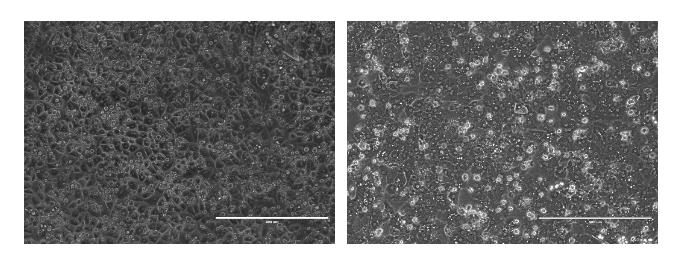It might be more useful than we know

Credit: Authors
In a paper to be published in a forthcoming issue of TECHNOLOGY, a group of researchers from Harvard Medical School have done a study on the viability of donated livers and its correlation with donor demographics. The results of this study could lead to a reduction in the number of livers that are discarded and have repercussions for development of novel therapeutics and bioengineering for clinical research applications.
In order to lessen the burden on orthotopic liver transplantation, which is currently the only treatment for end stage liver disease, many researchers and scientists are exploring different avenues and developing techniques to address the shortage of livers for transplant. Techniques such as recellularized bioengineered livers and hepatic cell transplantation are exciting but still remain limited on a clinical level. In addition, new pharmaceutical therapies rely on primary hepatocytes to determine the toxicity, metabolism, and drug-drug interactions necessary for US Food and Drug Administration approval. A large source of human hepatocytes is thereby beneficial for continuing this research as well as potentially developing new lines of therapy both clinically and pharmaceutically. The question remains, where do large sources of primary hepatocytes come from?
A group of scientists at the Center for Engineering of Medicine at Massachusetts General Hospital in Boston, Massachusetts explored the donor demographics and procurement data of 16 livers to determine if these factors impact the yield and viability of primary hepatocytes. The project, led by Sharon Geerts, looked at 6 different donor demographics and 4 different procurement factors. The donor demographics consisted of age, body mass index (BMI), race, cause of death, whether the donor was considered death by cardiac death or death by brain death, and gender. The procurement factors that were considered were warm ischemia time (WIT), oxygen saturation, mean arterial pressure, and cold ischemia time (CIT).
Donor demographics such as race and gender had significant impacts on viability and yield while demographics such as BMI, age, donor status, cause of death did not. In addition, liver procurement data such as WIT showed that organs with less than 30 mins WIT led to significantly reduced yield, but no impact was found on viability. Cold ischemia time had no impact on yield, but longer CIT did decrease the viability of hepatocytes.
Though the number of livers was small (n=16) and should be taken into consideration, the conclusions drawn could be used as indications to expand liver selection criteria for hepatocyte isolations for many researchers and incorporate livers from donors that would have otherwise been discarded. In addition, this research demonstrates using livers from organ procurement centers that work on a nationwide level, with various procurement protocols and long transit times can still produce high quality hepatocytes.
###
Additional co-authors of the Technology paper are: Sinan Ozer, Christopher Chu, Bryan Fuchs, MD., Kenneth Tanabe, MD., Heidi Yeh, MD, and Korkut Uygun, PhD. Dr. Yeh is from the Division of Transplantation under the Department of Surgery at Massachusetts General Hospital and Harvard Medical School in Boston, MA. Drs. Fuchs and Tanabe are from the Division of Surgical Oncology at the Massachusetts General Hospital Cancer Center and Harvard Medical School, Boston, MA.
This work funded by the US National Institutes of Health.
Corresponding author for this study in TECHNOLOGY is Dr. Korkut Uygun, [email protected].
For more insight into the research described, readers are invited to access the paper on TECHNOLOGY.
Fashioned as a high-impact, high-visibility, top-echelon publication, this new ground-breaking journal – TECHNOLOGY – will feature the development of cutting-edge new technologies in a broad array of emerging fields of science and engineering. The content will have an applied science and technological slant with a focus on both innovation and application to daily lives. It will cover diverse disciplines such as health and life science, energy and environment, advanced materials, technology-based manufacturing, information science and technology, and marine and transportations technologies.
About World Scientific Publishing Co.
World Scientific Publishing is a leading independent publisher of books and journals for the scholarly, research, professional and educational communities. The company publishes about 600 books annually and about 135 journals in various fields. World Scientific collaborates with prestigious organizations like the Nobel Foundation and US National Academies Press to bring high quality academic and professional content to researchers and academics worldwide. To find out more about World Scientific, please visit http://www.
For more information, contact Tay Yu Shan at [email protected].
Media Contact
Tay Yu Shan
[email protected]
Original Source
https:/
Related Journal Article
http://dx.




